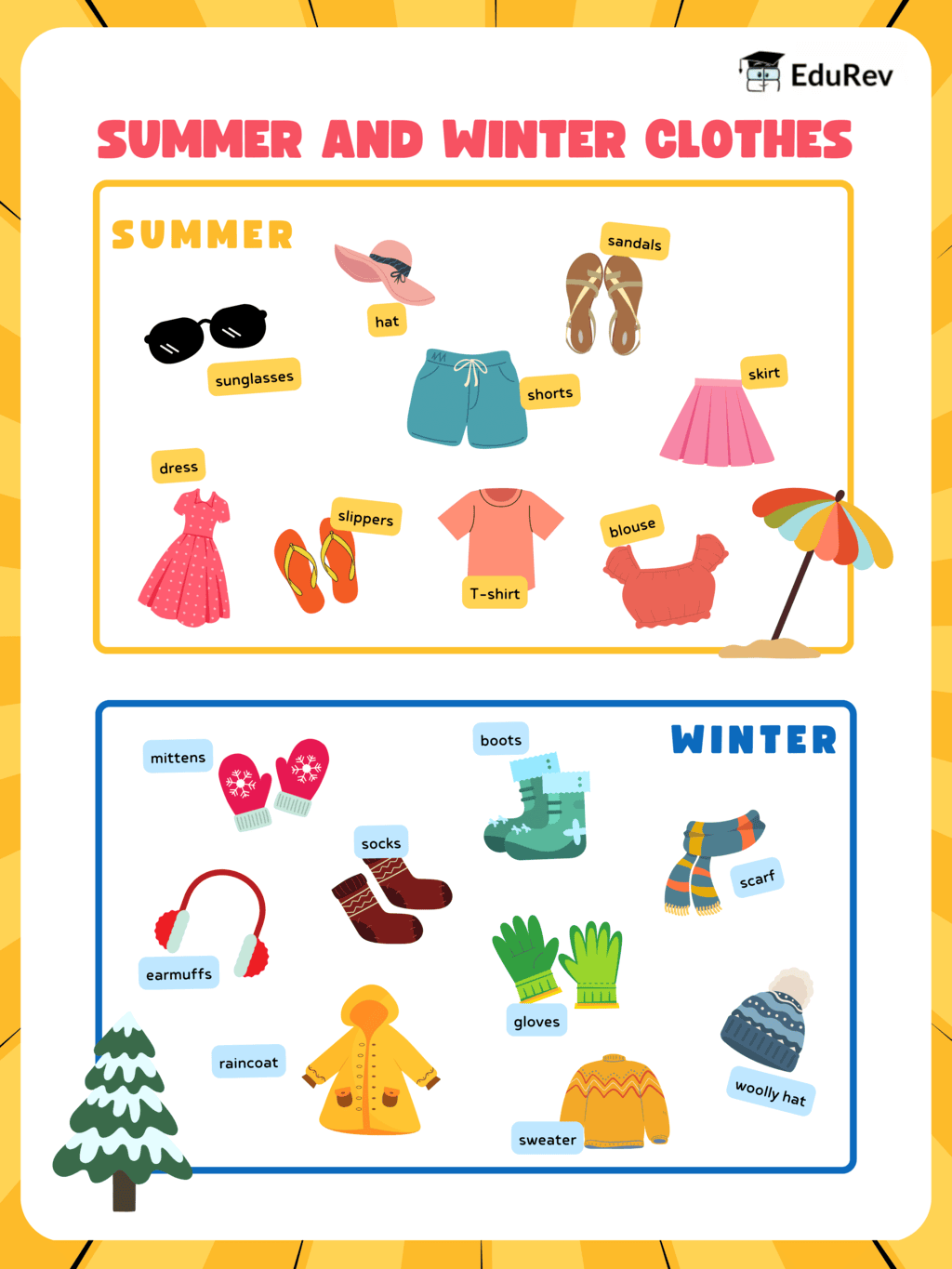Class 2 Exam > Class 2 Notes > EVS for Class 2 > Poster: Clothes We Wear
Poster: Clothes We Wear | EVS for Class 2 PDF Download

The document Poster: Clothes We Wear | EVS for Class 2 is a part of the Class 2 Course EVS for Class 2.
All you need of Class 2 at this link: Class 2
|
30 videos|243 docs|48 tests
|
FAQs on Poster: Clothes We Wear - EVS for Class 2
| 1. What are the different types of clothing commonly worn in various cultures? |  |
Ans. Different cultures have unique clothing styles that reflect their traditions, climate, and social norms. For example, in Japan, the kimono is a traditional garment, while in Scotland, the kilt is a symbol of heritage. In Western cultures, casual wear includes jeans and t-shirts, while formal wear may consist of suits and dresses. Additionally, many cultures have specific attire for religious or ceremonial occasions, such as saris in India and dashikis in West Africa.
| 2. How does clothing affect personal identity and self-expression? |  |
Ans. Clothing plays a significant role in shaping personal identity and self-expression. The way individuals dress can communicate their personality, values, and social status. For example, someone who prefers bright colors and bold patterns may be seen as outgoing and creative, while someone who opts for neutral tones may be perceived as more reserved. Fashion choices can also be influenced by subcultures, allowing individuals to align themselves with particular groups or movements.
| 3. What are the environmental impacts of the fashion industry? |  |
Ans. The fashion industry has a considerable environmental impact, contributing to pollution, waste, and resource depletion. The production of clothing often involves the use of toxic dyes, excessive water consumption, and greenhouse gas emissions. Additionally, fast fashion leads to significant textile waste, as consumers frequently discard items after only a few wears. Sustainable fashion practices, such as using eco-friendly materials and promoting recycling, are increasingly important to mitigate these effects.
| 4. How do fashion trends evolve over time? |  |
Ans. Fashion trends evolve due to various factors, including cultural shifts, technological advancements, and social influences. Trends often emerge from historical events, celebrity endorsements, and social media platforms. For instance, the rise of vintage and thrift shopping reflects a growing awareness of sustainability and individuality. Fashion cycles also tend to repeat, with styles from previous decades being reinterpreted and modernized to fit contemporary tastes.
| 5. What role do fabrics and materials play in clothing design? |  |
Ans. Fabrics and materials are crucial in clothing design, as they determine the garment's appearance, comfort, and functionality. Different fabrics, such as cotton, silk, and polyester, have unique properties that affect their drape, breathability, and durability. Designers must consider the intended use of the clothing, climate conditions, and consumer preferences when selecting materials. Advances in textile technology have also led to the development of innovative, performance-enhancing fabrics that cater to specific needs in activewear and outdoor clothing.
Related Searches





















